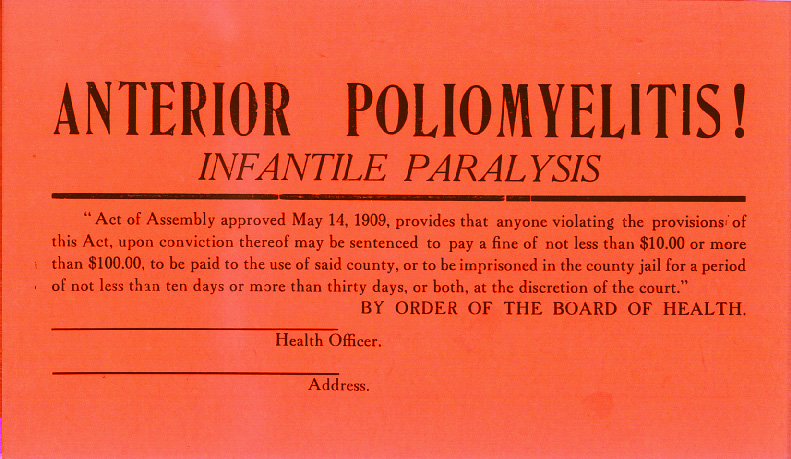Someone asked me a really good question recently. To paraphrase:
The R0 (R-nought) is the average number of patients to whom a given infected person spreads the illness.
(If R0 = 2, then each infected person on average infects 2 other people over the course of their illness.)
The R0 of COVID-19 is between 2-2.5.[1] (Note, this number is in some flux, and could be higher or lower.)
The R0 of polio was worse (R0 = 5-7), as was SARS (R0 = 2-5).[2]
So why didn’t we all self-isolate when SARS was a thing? Why didn’t everyone self-isolate for polio back in the 1950s?
This is a great question because it reveals an understanding of what’s going on, and it is also a great question because the answer reveals a few non-obvious things.
SARS
In the case of SARS, we did slam down the self-isolation protocols. This happened quickly and aggressively. This allowed public health to isolate any carriers and any contacts. Because it was done early and thoroughly, a major outbreak was prevented. This is what ideally should have happened if the Chinese Communist government hadn’t destroyed data, lied, jailed those who tried to raise the alarm, etc.
[Incidentally, I wouldn’t trust any data coming out of China on their current infections or lack thereof. I simply don’t think they can be trusted, and no one you can trust is there watching and reporting back.]
Polio
The case of polio is more interesting.
Polio is usually spread by what is called the “fecal-oral” route–i.e., the virus is shed in your stool, and you somehow get stool in your mouth. Infected and contaminated water supplies would be the most common way for this to happen.
Even though it has been identified for thousands of years, the major outbreaks of polio are relatively recent. The major outbreaks happened in the late 19th and early 20th century. Why was this?
Polio has the interesting phenomenon of being less likely to cause paralytic polio (which occurs in about 1% of those infected) when you catch it at a younger age–below 6 months old.
So, the older you are when you first encounter polio, the more likely you are to get seriously ill.

What was happening in the late 19th and early 20th century? For the first time in history, large populations were given access to relatively reliable, fairly clean water supplies. Fecal-oral spread of polio virus from birth was a much less likely possibility. (It was probably virtually inevitable before that, at least to anyone who lived in a city. And, for rural people, they probably had relatively limited contact without outsiders, so they were unlikely to be exposed either.)
Remember that polio is spread by fecal-oral route. So, for most of history, you had a very high chance of encountering polio virus when you were very young, and so less likely to get ill. Once exposed, you were immune.
This is a good example of the law of unintended consequences. Who would have thought that there would be a downside to clean water supplies. But there was–an explosion in symptomatic polio in kids 5 and up.
So, during the polio epidemics we did isolate people dramatically–we isolated children at risk. Most adults would have already been exposed as infants/children, and so were immune. It was only the kids that were at serious risks. Polio peaks in summer months, and those who grew up in the 1950s probably have vivid memories of being kept indoors all summer, swimming pools being closed, etc.
Happily, the Salk vaccine of 1955 made all this unnecessary (unless the anti-vaxxers manage to bring it back before we achieve world-wide eradication).
Conclusion
So, to answer the questions the short answers are:
- We did isolate severely with SARS–we just caught it early, and so didn’t require population-wide lockdowns. It was controlled at a more local level.
- With polio, we did isolate the vulnerable. But, unlike with COVID-19, the whole population was never vulnerable to polio before the vaccine. Most adults were probably exposed and immune (even if they didn’t realize it). So locking down adults would have served no purpose–it was only kids who were at risk.
[1] https://www.livescience.com/covid-19-pandemic-vs-swine-flu.html
[2] https://en.wikipedia.org/wiki/Basic_reproduction_number.
Continue reading at the original source →



